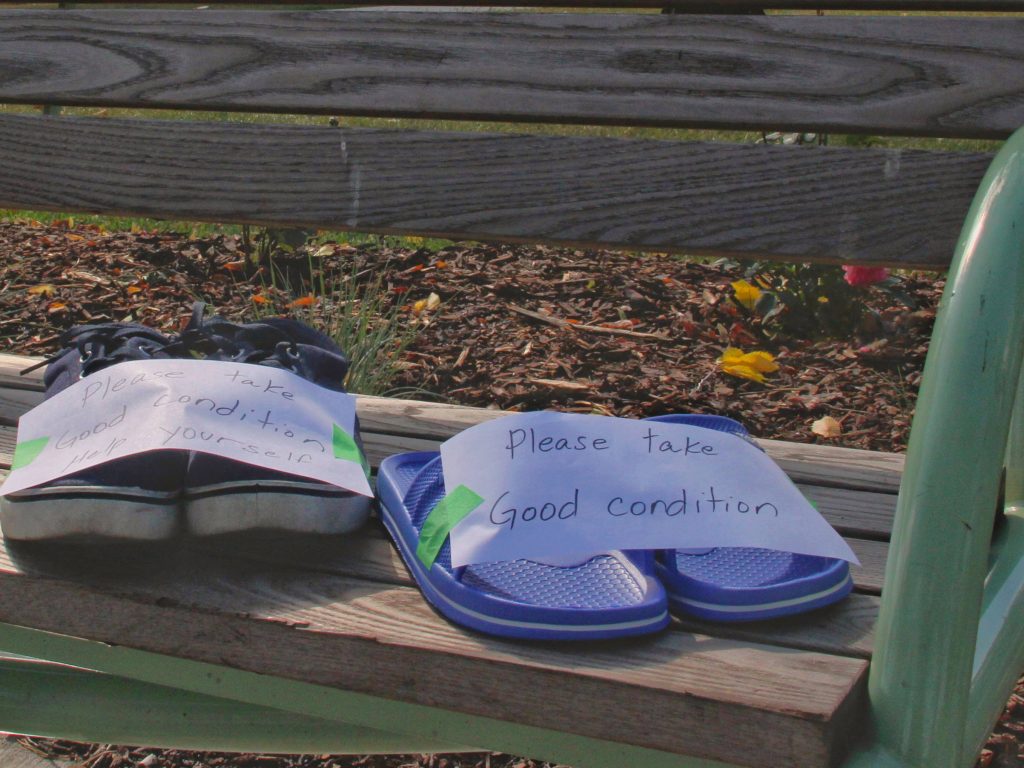
Butler Memorial Park and Jasper Transit Centre
You are now standing on the intersection of Stony Plain Road and 157th street. Looking Eastwards down Stony Plain Road towards the skyscrapers of downtown Edmonton, it is sometimes hard to remember that you are now in the heart of the old town of Jasper Place, a once thriving bedroom community on the edge of a fast-growing metropolitan center that was Edmonton.
Located on the convergence of Cree and Blackfoot territory, the village of Jasper Place first attracted farmers to its rich agricultural soil and grazing ground in the early 20th century. Further population growth was fueled by an influx of Edmontonians escaping high municipal taxes. By the post WW2 era, Jasper Place was a well-established hamlet, the largest in Alberta in fact, with a population of about 9,000 in 1950. Incorporated as a town in the same year, ‘The Young Giant’, as it came to be known, soon became distinguished by its industrial prowess and the attraction of night shopping. By the 1960s however, this remarkable growth was hampered by a rising debt burden incurred through several costly community projects, including the Jasper Place Sports Centre and Jasper Place Composite High School. Jasper Place was finally amalgamated by the City of Edmonton in 1964, with a population of about 37,000 at the time.
As you ponder the rich history of the area, take a minute to walk through the Butler Memorial Park. Read the plaques facing outwards onto Stony Plain Road and reflect upon the story they tell. Consider whether these pieces are reflective of the history of the area and all of its inhabitants, including the unhoused individuals that frequent the park, and the diverse ethnic communities that call this area home…. What do you think is missing from these plaques?
On the park’s East end, you will see the Jasper Place Transit Centre, a glistening new structure completed in 2020. For many in our community, centres like this provide a lifeline, allowing access to housing, employment, and healthcare. Access to reliable public transit routes can mean the difference between making a doctor’s appointment and worsened chronic health issues for individuals experiencing homelessness and poverty.
While the story of Jasper Place’s amalgamation into the City of Edmonton makes for an interesting anecdote, it is examples such as this that are so often at the root of the transportation barriers our community faces. As North American cities have grown exponentially in the past century, amalgamating surrounding towns and experiencing suburban sprawl, owning a car has become a necessity to get around and live comfortably. Car dependency in cities such as Edmonton is yet another example of how modern systems have excluded the less fortunate, those who can’t afford car insurance and gas, let alone their own car. Because our unhoused neighbors take an average of 30,000 steps a day, transportation is a real and pressing issue for many in our city.
The City of Edmonton has taken notice to this issue, and many new exciting programs are in the works to benefit those who have been disadvantaged by our transit system for so long. One such example is the PATH program, which stands for Providing Accessible Transit Here. As a partnership with 10 different not-for-profits, PATH provides vulnerable Edmontonians a free monthly transit pass, an enormous help for those who don’t have access to affordable transportation.
Another City of Edmonton initiative is the Donate a Ride program, which provides free bus tickets to vulnerable individuals on a short-term basis, such as for making it to an important job interview that means the difference between living on the streets and breaking the cycle of homelessness. While the Donate a Ride program is primarily used on a short-term basis, it can have a long-term impact on community members, especially when the cost of a monthly bus pass is currently $100.
I invite you to think about how these programs make a difference in the lives of our community. If you didn’t own a vehicle, or couldn’t afford a bus pass, how would you get around? Would you plan your day differently? Would you have to sacrifice any relationships or life opportunities? As you look down Stony Plain Road, imagining the future LRT Valley line, think about how accessible public transportation is a key factor in creating a vibrant and healthy city.
Continue south through the park and turn right onto 100A Ave. At our next stop we will get to know the Oliver Centre, an important community space offering affordable childcare under a unique and culturally innovative Indigenous model.